Religion Bulletin - May 2025: Trial Continues for Two Members of Tịnh Thất Bồng Lai; Two Independent Protestant Pastors Sentenced
Trial of Two Tịnh Thất Bồng Lai Members Moves Forward On May 21, 2025, authorities in Long An Province continued

“Thien An” means “heavenly peace”, but the Catholic monks here have never lived in peace.
In the 45 years since Saigon fell to the Communists in 1975, the monks of Thien An Abbey have only known hard labor and study, and resistance against forces hell-bent on taking their land by any and all means.
Thien An Hill today is no longer covered by sweeping pine forests; under the government’s fist, the trees have all withered away. The authorities have coercively taken the land by using thugs. The monks defend themselves using the only weapon they have: prayer.
Once sacred and picturesque, the area has now become anything but. How did this come to pass?
In 1940, Father Romain Guilauma, a French missionary, purchased a piece of land on today’s Thien An Hill. The place resembled a miniature Da Lat and was only about 10 km away from the center of Hue. Father Guilauma built a thatched cottage on the land to receive monks from the Order of Saint Benedict. The land is currently situated in Cu Chanh Village, Thua Thien – Hue Province.
Antonin-Fernand Drapier, the French Resident Superior of the Holy See, said a celebratory mass upon the opening of the abbey on June 10, 1940. The abbey was given the name “Thien An”, meaning “heavenly peace”.
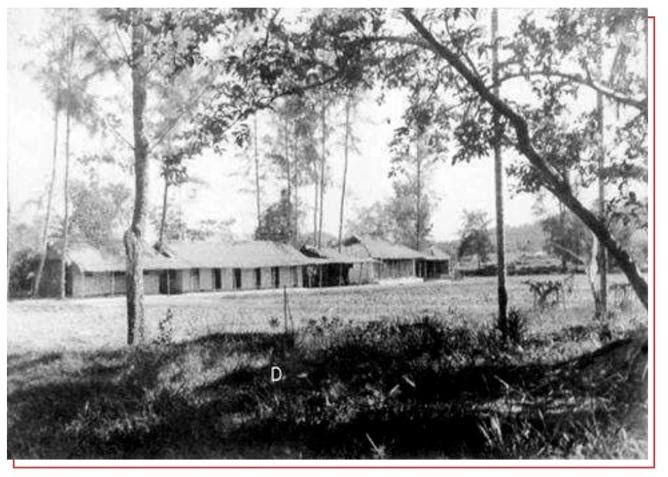
During this time, monks expanded the abbey’s footprint, building structures, cultivating the land, and raising livestock to achieve self-sufficiency.
The abbey built a chapel and a three-story building with 28 rooms in 1943. In 1956, the abbey began construction on a second three-story building, with 38 rooms on the upper two floors.
The pine forests on Thien An Hill were almost certainly planted by monks during this time period. Furthermore, according to the Hue Festival, monks also dug two large lakes (Upper and Lower Thuy Tien), which provided water for the entire area.
From then on, these lakes and pine forests became one of Hue’s hidden getaways and the area began to be referred to as Thien An – Lake Thuy Tien.
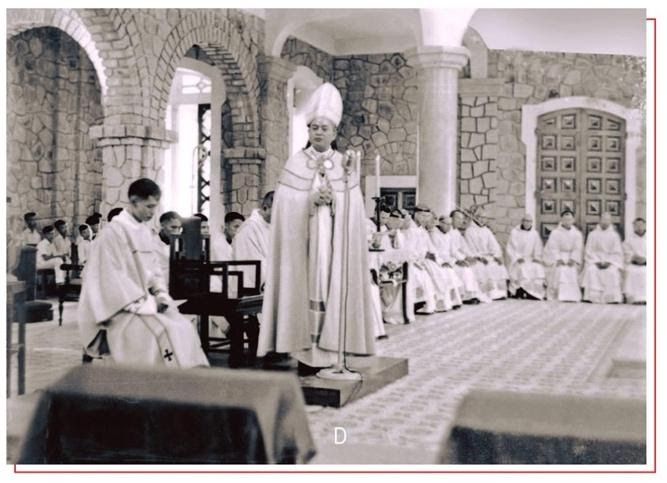
In 1969, Abbot Thomas Chau Van Dang asked the Thua Thien provincial Land Office (under the Republic of Vietnam) to reissue “copies of relevant land registers and maps”, lost after the violent Tet Offensive in 1968.
The abbey stated that the Land Office provided it with “a copy of the parcel map”, that showed an area of 107 hectares.
According to the map, abbey land bordered Upper Duong Xuan Village to the north, Bang Lang and Kim Son villages to the south, Minh Manh Road to the east, and Bara Dam and Cu Chanh villages to the west.
Monks have stated that these 107 hectares of land are predominantly pine forests, punctuated by a fish farm, a dam, an elementary school, an orphanage, Duc Me (Mother Mary) Hill, and Thanh Gia (Cross) Hill.
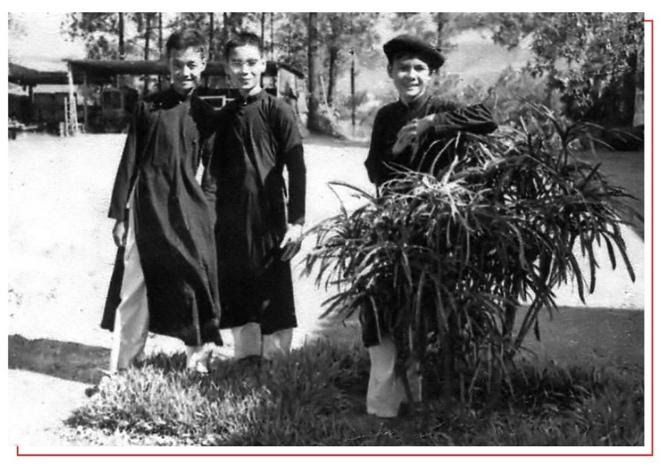
After the Communist victory in 1975, religious establishments no longer had a voice. They had to follow the orders of the revolutionary government, no matter how backwards these orders were.
In January 1976, the head of Hue’s Office of Agriculture and Forestry asked the abbey to “cede” a school it no longer used to house workers. The office began using the school before the abbey had agreed to cede the property.
Afterwards, the abbey said, the government garrisoned troops on abbey land and asked the monks to hand over its dispensary, orphanage, and one hectare of land. The abbey faced with no choice and had to agree. A fish pond was also later requisitioned.
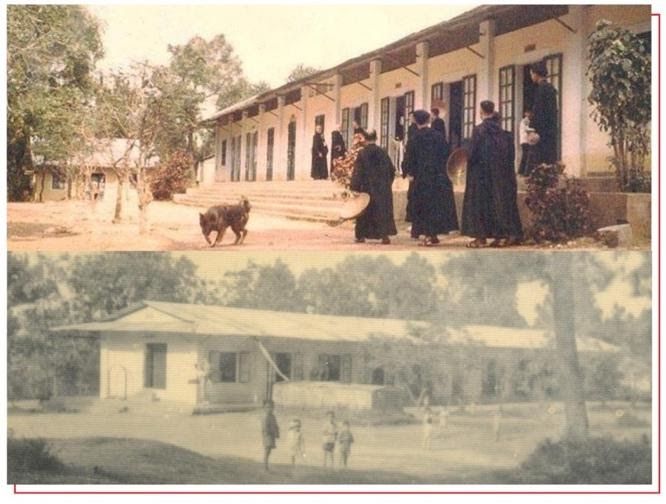
The land dispute over Thien An Hill took on another layer of complexity when the central government became involved.
In November 1999, the People’s Committee of Thua Thien – Hue Province recommended that the government confiscate Thien An Hill to construct an amusement park. A month after, Vietnam’s prime minister decided to take over more than 49 hectares of the abbey’s land and rent it to the Ancient Capital Hue Travel Company (a state-run business) to build the Thuy Tien Lake and Thien An Hill Amusement Park.
In the process of confiscating the abbey’s land, monks stated, the government wrongly used an order for uncultivated land, which meant the government could confiscate lands without providing the abbey with any compensation or advance notification; as such, the abbey was neither compensated nor notified that the land had been taken.
The abbey petitioned the government regarding the wrongful confiscation of the land, stating that the government lacked jurisdiction according to the Land Law at the time.
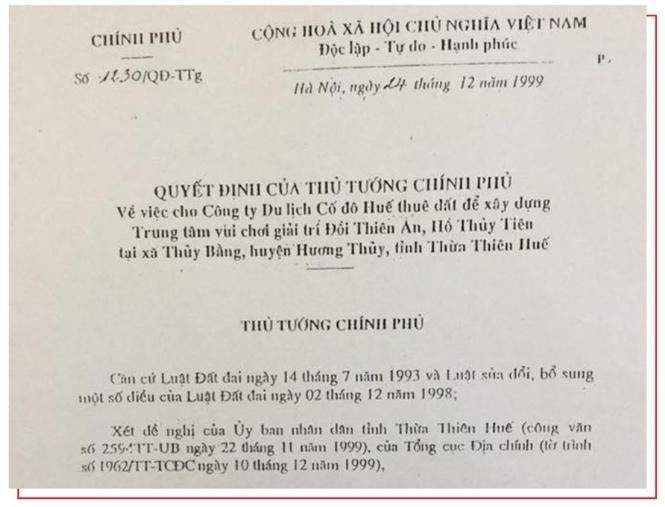
Also in 1999, Boi Tran Villa, a restaurant and an exhibition hall for an individual, Ms. Phan Thi Van’s paintings, was constructed. The abbey said that the villa’s land was previously the abbey’s orange grove, which the Tien Phong Forestry School had partitioned off and sold.
The forestry school later became the Tien Phong Forestry Company, owned by the People’s Committee of Thua Thien – Hue Province.
Before the abbey’s petition was even addressed, the Thuy Tien Lake amusement park opened in 2001, with more than 70 billion dong (US$3million) in investment.
In 2002, Vietnam’s State Inspector General addressed the abbey’s petition, responding that: “The State does not recognize Thien An Abbey’s land usage rights for the 107 hectares of land and pine forest on Thien An Hill.”
What’s even more strange is that while the State Inspector General pointed out that “the entirety of the land and pine forest on Thien An Hill” had been given to the Tien Phong Forestry School in 1976, the abbey was completely unaware of this.
The abbey continued to oppose the Inspector General’s conclusion through more of its petitions to the government, stating that such conclusion did not focus on resolving the abbey’s disagreement according to the prime minister’s decision.
The Thuy Tien Lake Amusement Park had begun admitting people from the public in the middle of 2004. However, by 2008, it was suffering heavy losses. The provincial People’s Committee later allowed another company to lease the amusement park.
In December 2008, the government issued a directive for provinces and cities to review and return to religious organizations all properties that were not being used effectively; however, none of Thien An Abbey’s properties were returned.
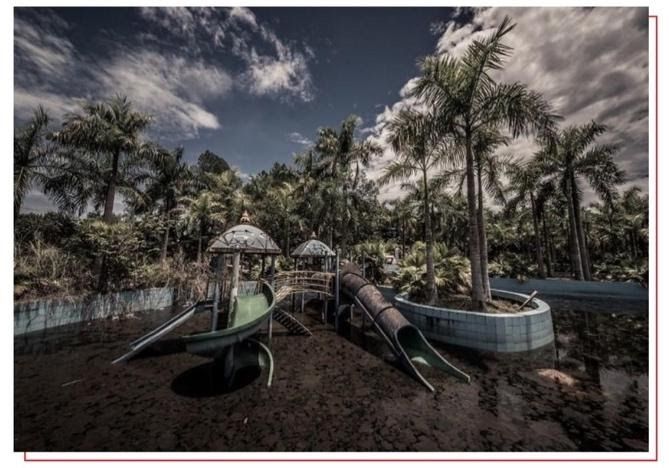
The government designated Thien An Hill a “special-use forest” but continued to build villas within it.
In 2010, the Cat Tuong Quan Retreat was constructed. The business venture was pursued by another individual, Ms. Ta Thi Ngoc Thao, aiming to provide a space for rest, meditation, and Zen study. The abbey stated that the retreat’s land was previously the abbey’s orange grove that the Tien Phong Forestry School had partitioned off and sold.
In 2011, the Thuy Tien Lake Amusement Park was closed down due to unprofitability.
Thien An Abbey reported that in 2013, the Thua Thien – Hue Province People’s Committee issued papers certifying Tien Phong Forestry Company’s land usage rights, which included a number of the abbey’s structures, including an internal road, a chapel, a dormitory, and a building that the Hue Office of Agriculture and Forestry had borrowed since 1976.
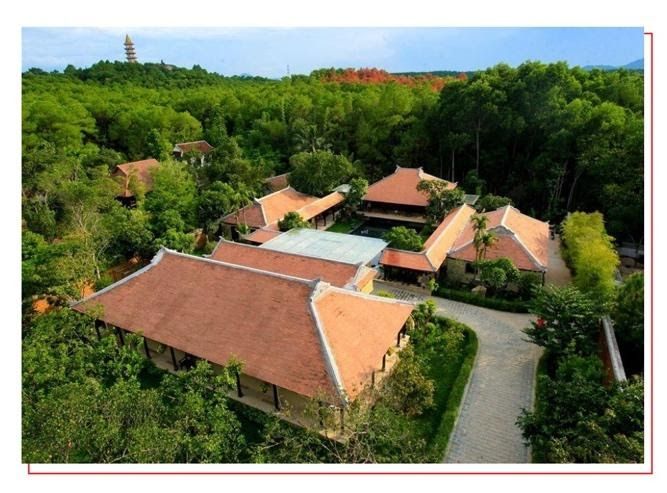
From the beginning of 2015, peace was shattered on Thien An Hill as the gentle lands became anything but.
The abbey said that beginning in January 2015, the government proposed multiple times that the abbey accept a measly 18 hectares of land so that their claims would be entered into the official registry. The abbey refused.
In May 2015, monks discovered that a statue of Jesus belonging to the abbey had been smashed and scattered in the wilderness.
At the beginning of 2016, a group that included police, cadres, employees of the Tien Phong Forestry Company, and reporters entered the abbey to investigate the chopping down of numerous pine trees. Afterwards, the monks were rounded up by investigators allegedly for the crime of deforestation. The monks stated that an article in the Vietnam Law Newspaper slandered the abbey, falsely accusing it of deforestation and obstructing officials.
In March 2016, a statue of Jesus that had just been put up was pulled down by a group of women, civil defense officers, and cadres mobilized by the government.
In the middle of 2016, the abbey reported that the Thuy Bang commune authorities led about 200 individuals accompanied by a large excavator to halt road construction linking the abbey to a partially-completed garden. The Thuy Bang Commune People’s Committee afterwards issued the abbey a form stating that it had trespassed on special-use forest land by constructing this road.
In March 2017, authorities continued to mobilize people to prevent the abbey from leveling land in areas the abbey claimed.
That same month, unknown persons carved large V’s into numerous pine trees near the abbey’s dam, causing them to slowly wither and die.
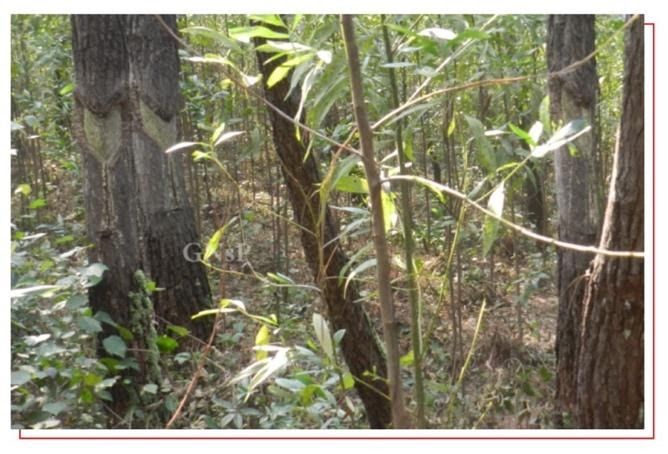
In May 2017, the government continued to allow numerous individuals to arrive at the abbey and disrupt renovation work on the abbey’s claimed land.
At the end of June 2017, a statue of Jesus and the Holy Cross was resurrected only for the government to pull it down again. A number of monks were injured in the incident, but were unable to get to the hospital for treatment because police had set up traffic barriers blocking exit from the abbey.
After that scuffle, the provincial People’s Committee met with abbey representatives, but the conflict remained unresolved. The committee stated that the prime minister’s statement in 1999 and the State Inspector General’s decision in 2002 were “faultless and should remain as is”.
***
On July 25, 2017, the abbey reported that the provincial People’s Committee had responded to a number of the abbey’s grievances regarding the piney hill:
First, the abbey’s school building was demolished according to the government’s 1976 Decision 188/CP because the school was a “remnant of land possession and colonial exploitation…”
Second, the land which the Cat Tuong Quan Retreat sat on originally belonged to the Tien Phong Forestry School, which transferred it to a residential household in 1984; this entity then passed it onto another household, which then passed it onto the retreat.
Third, the owner of the Boi Tran Villa purchased land for his/her villa by combining purchases from two different households: one from the household that passed the land to the Cat Tuong Quan retreat and the rest from another household.
Fourth, regarding another household that was supposedly using abbey land, the committee stated that this household was sitting on land that the forestry school had granted to the family in 1984 to start a garden and build a house.
The abbey argued that the committee’s explanations were not convincing, especially since land survey records remain conspicuously missing.
***
On December 18, 2017, commune authorities blocked monks from setting up a Christmas welcome gate on an internal road leading into the abbey.
Approximately one week later, the abbey reported that Phan Ngoc Tho, the vice-chairman of the Thua Thien – Hue Province People’s Committee, proposed that the Order of Saint Benedict and the Provincial Vietnamese Order of Saint Benedict no longer designate Father Nguyen Huyen Duc as the abbey superior and that he should be transferred out of the province.
In January 2018, Thuy Bang commune police asked the abbey to provide a list of individuals who resided at the abbey in any form to help with on-site corroboration.
At the beginning of March 2018, after monks felled a tree to prevent a fire, police and traffic officers, forest management, and government cadres all joined forces to obstruct the felling, ultimately confiscating the pine tree. After this event, five incidences of forest fire occurred one after the other.
On March 4, 2018, a portion of the abbey’s claimed pine forest caught fire. After the fire, four other forest fires occurred on May 10, May 22, May 23, and July 4, 2018. The abbey claimed that the fires destroyed about 8 hectares of pine trees that were about 60 years old.
The landscape of the fire on July 4, 2018, taken from the Abbey’s bell tower.
In June 2018, Phan Ngoc Tho became the chairman of the Thua Thien – Hue Province People’s Committee after his predecessor retired early.
On July 18, 2018, the abbey reported that a group of employees from the Tien Phong Forestry Company had entered the burned land on July 4 to plant pine trees but were stopped by the abbey.
In December 2018, the abbey continued to demand the Tien Phong Forestry Company return the school it had borrowed from the abbey.
2019 – 2020: Strains continue to worsen
On the night of April 19, 2019, about three hectares of old pine trees that had grown for more than 60 years burned completely. According to the abbey, Tien Phong Forestry Company regularly claims that it manages the land but it did nothing to stop the burning.
The fire happened on April 19, 2019. Source: Thien An Abbey Facebook.
The abbey reported that this fire and the previous five fires were ignored by firefighters and that the government, which has released no public information about the events, failed to carry out an investigation into the damage.
In May 2020, Thua Thien – Hue provincial authorities announced that they would transform the dilapidated Thuy Tien Lake Amusement Park into a “cultural park to serve the community, a state-of-the-art creative space, a sculpture garden.”
About a month afterwards, approximately one hectare of the abbey’s pine forest was hacked to pieces. Many large pine trees were sawed into, leaving deep scars that would kill the trees slowly without felling them.
In July 2020, the abbey continued to send official documents asking for the return of the elementary school that the Tien Phong Forestry School borrowed from the abbey.
***
Over three consecutive days, from August 10-12, 2020, when the entirety of Thua Thien – Hue Province was on-guard against COVID-19, a crowd of approximately 40 people held up signs and shouted over loudspeakers at the site of a toppled statue of Jesus, demanding the abbots halt their work and return the land to them.
Abbots recognized these individuals as committee cadres, members of the Thuy Bang commune women’s association, and familiar security and surveillance officers.
Protests of this nature cannot be organized without the backing of local authorities. The ongoing dispute between the abbey and the government continues to escalate with no prospects of good results. We will continue to update the latest developments of this dispute in the coming months.
Protest against Thien An Abbey on August 10, 2020. Source: Thien An Abbey Facebook.
This article was written in Vietnamese by Thai Thanh and previously published on Luat Khoa Magazine. The translation is done by Will Nguyen.
Vietnam's independent news and analyses, right in your inbox.